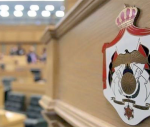You are here
The ‘radicalised’ Republican party drives away many
May 14,2014 - Last updated at May 14,2014
During a recent visit to the US, I discovered that several relatives I used to consider “genetic Republicans” now back the Democratic Party even though they are not convinced that President Barack Obama is doing a good job.
“Genetic Republicans” are people born into families which always voted Republican (there are also “genetic Democrats”); some have been turned off by the antics of the Republican Party in the past few decades.
“What happened to the Republicans?” asked one woman, a retired schoolteacher.
“During Eisenhower’s presidency in the 1950s, Republicans were moderate, responsible.”
This is no longer the case. The Republican Party has been radicalised to the extent that many of its supporters consider Obama a communist, or at least a socialist, and believe Marxists are taking over the country.
They argue that every restriction the government places on their freedom to do anything — including walking around with concealed weapons — is an affront and a denial of their constitutional rights.
Some of these people are even university educated. It is difficult to understand why they think the way they do. The only explanation is that they do not think, but simply ingest clap-trap from right-wing media and politicians.
In other words, they are brainwashed.
Those who are not brainwashed cannot stand against the tide of radicalism.
The radicalisation of the Republican Party has had a malign impact on the US politics, particularly since Big Business has secured a stranglehold on the country’s political establishment that is obstructing essential reforms.
Early this month, the US quality press contained a number of articles on the growing inequality in the US.
Nobel laureate Joseph Stiglitz, who advised the Clinton administration, called inequality “morally wrong” and warned that an “economic system that only delivers for the very top is a failed economic system”.
In the past, when the US “reached extremes of inequality”, he said, Washington enacted “policies and programmes that provided hope that the American dream could return to being a reality”.
He argued that the US must reduce inequality by imposing higher taxes on the rich, increasing the minimum wage, increasing investment in education and enacting strong anti-trust laws.
After mapping out inequalities across the US, Richard Florida wrote in The Atlantic Cities that between 1979 and 2007, “the share of income going to the top 1 per cent of the population increased at a rate of 10 times that of the income of the bottom 99 per cent”.
Furthermore, the “share of income going to the top 1 per cent rose across each and every one of the 50 states”.
To reduce inequality, the study recommends, as did Stiglitz, “improving educational and economic opportunities and increasing the wages of those at the bottom of the economic order”.
But to achieve this, a new “social compact” would have to be adopted. This would “upgrade the 60 million-plus low-skill, low-pay service jobs and add a safety net”.
The aim would be to boost such people into the middle class
This will not happen due to the radical Republicans and the iron grip of Big Business interests on the dysfunctional US system, which is plagued by less redistribution of income through health, education and welfare programmes than other developed countries.
It is interesting to note that the countries closest to the US pattern are Canada, Britain and Australia, while New Zealand, Norway, Italy, France, Spain, Sweden, Portugal and Denmark do not; Denmark provides the greatest distribution of wealth to the poorer sections of society.
The US minimum wage is lower than in comparable societies and trade unions are weaker, depriving the working class of bargaining power.
Efforts by the Obama administration to raise the minimum wage have failed due to vehement opposition by congressional Republicans and some southern Democrats who also reject raising taxes on the wealthy.
This has created a three- or four-tier society: the top 1 per cent, which enjoys the best of everything, the upper middle class, which is comfortable, the middle class, which is struggling to maintain a reasonable standard of living, and the underclass, which is permanently underemployed, underpaid and oppressed.
The underclass suffers from multiple privations: decent housing, healthful food, respectable schooling and medical care.
Millions live in poor housing in rural and urban slums where crime is rampant, especially among the underclass.
The members of this class cannot afford proper nourishment and rely on cheap food: meat pumped full of hormones subsidised by the government, junk food, sweet drinks and potato crisps.
They cannot afford fresh fruit and vegetables or produce free of pesticides, antibiotics and hormones.
While millions enrolled in Obama’s healthcare programme, there are still millions who cannot afford health care. Many live in areas where schools are substandard, denying proper education to their children who would provide them a way out of poverty.
To make matters worse, the US Social Security and Medicare systems are starved of funds and will not be able to provide pensions and care for people who retire or are ill.
High earners who can save for their retirement are in a much better position than those who must rely on federal programmes.
The deterioration of the educational system means that skills are declining.
A recent study undertaken by the Organisation for Economic Cooperation and Development showed that while citizens of the US in the 55-65 age bracket possess above-average skills when compared to other developed countries, those between the ages of 16 and 24 rank near the bottom among citizens of wealthy countries.
If this trend continues, the US will pay an increasingly high price for clinging to the free market and low-tax policies that have created and continue to sustain the growing wealth gap.













